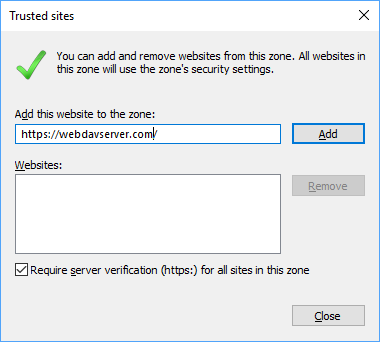Installing Protocol Application Web Browser Extensions
The Edit Document Opener protocol application is provided with web browser extensions for Google Chrome, Firefox, Microsoft Edge Chromium, Safari, and Legacy Edge that pass cookies to the protocol application. Browser extensions also help to detect protocol application presence and make document opening reliable and fast. Web browser extensions are automatically installed during protocol application installation, however, additional steps are required to confirm extensions activation.
Google Chrome Edit Document Opener Extension
The Edit Document Opener Google Chrome extension is installed automatically with Edit Document Opener protocol application on Windows, Mac OS X, and Linux. It is required by protocol application and must be enabled if you are using Google Chrome.
When opening Google Chrome first time after installation you will see a notification that an IT Hit Edit Document Opener extension was installed:

Enable the IT Hit Edit Document Opener extension:

Important! After installing web browser extension you must reload a web page.
If the Google Chrome extension is disabled or uninstalled for any reason, the protocol application would not function in Google Chrome. If the IT Hit Edit Document Opener protocol application can not be detected in Google Chrome and requesting installation, the first thing to do it to check that the extension is installed and enabled:
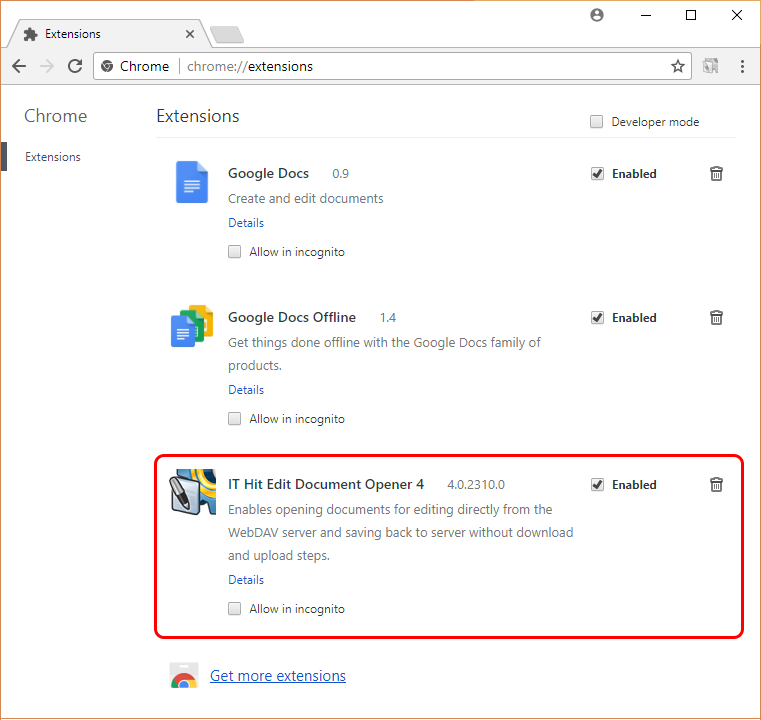
Important! If Google Chrome Extension is manually uninstalled it will NOT be automatically reinstalled with protocol app installation, this is a Chrome limitation. You must manually install the extension from Chrome Web Store. In this case, use the following links to install the extension: https://chrome.google.com/webstore/detail/it-hit-edit-doc-opener-5/nakgflbblpkdafokdokmjdfglijajhlp
Firefox Edit Document Opener Extension
Important! You must restart Firefox to activate the Edit Document Opener web browser extension.
When you run FireFox first time after protocol app installation you will see a notification that an IT Hit Edit Document Opener extension was installed:

Enable the IT Hit Edit Document Opener extension:

If the IT Hit Edit Document Opener protocol application can not be detected in Firefox and requesting installation, the first thing to do it to check that the extension is installed and enabled:
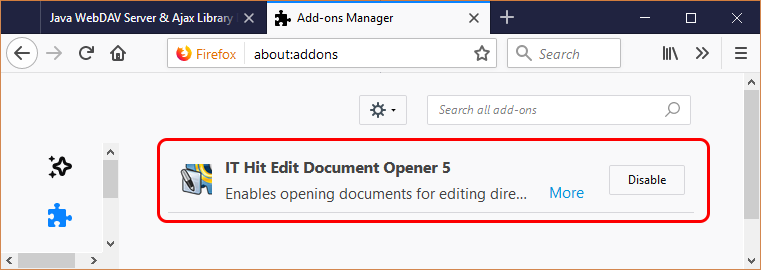
Safari Edit Document Opener Extension
The Edit Document Opener Safari extension is installed automatically with the Edit Document Opener protocol application on macOS. It is required by protocol application and must be enabled if you are using Safari.
After the protocol application installation wizard completes, the Safari Preferences dialog will automatically open, offering Safari extension installation. Select "Trust" to install the extension:

If the Safari extension is disabled or uninstalled for any reason, the protocol application would not function in Safari. If the IT Hit Edit Document Opener protocol application can not be detected in Safari and requesting installation, the first thing to do it to check that the extension is installed and enabled. You can find the extension in Safari preferences on the Extensions tab:

Microsoft Edge Chromium Edit Document Opener Extension
The Edit Document Opener Microsoft Edge Chromium extension is installed automatically with the Edit Document Opener protocol application. It is required by protocol application and must be enabled if you are using Microsoft Edge Chromium.
After installing Edit Document Opener you will see a notification that an IT Hit Edit Document Opener extension was installed:

Enable the IT Hit Edit Document Opener extension:

Important! You must reload a web page after enabling the extension.
If the Microsoft Edge Chromium extension is disabled or uninstalled for any reason, the protocol application would not function in Microsoft Edge Chromium. If the IT Hit Edit Document Opener protocol application can not be detected in Microsoft Edge Chromium and requesting installation, the first thing to do it to check that the extension is installed and enabled:

In case the extension was removed from the web browser, you can manually download and install the extension using the following URL: https://microsoftedge.microsoft.com/addons/detail/mdfaonmaoigngflemfmkboffllkopopm
Legacy Microsoft Edge Edit Document Opener Extension
The Edit Document Opener extension is required in case of cookies authentication only. It is not required for anonymous, basic, digest, NTLM, Kerberos, URL-authentication or any other authentication.
Important! While Edit Document Opener is provided with an extension for Legacy Microsoft Edge, Microsoft currently approves only a limited number of extensions in its store. In case of cookies authentication, the Edge extension should be re-enabled each time Edge starts. We recommend upgrading to Microsoft Edge Chromium or to use any other web browser instead.
When you run Edge first time after protocol app installation go to Extensions:

and enable IT Hit Edit Document Opener extension:
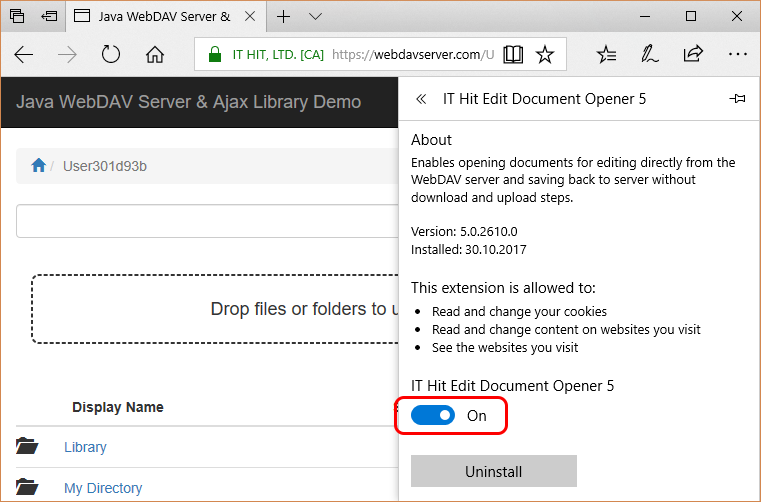
Next time when starting Edge you will see the following message. Enable the extension selecting "Turn on anyway" or go to Extensions menu and enable it manually:

Internet Explorer
Internet Explorer does not require any extension or ActiveX. However, cookies authentication requires a web site to be added to the trusted sites list.
Important! Cookies authentication in Internet Explorer requires a persistent cookie (with expiration date). Session cookies can NOT be used to open documents from a web page.
In Internet Explorer select Tools->Internet Options->Security tab->Trusted sites. Select 'Sites' button:
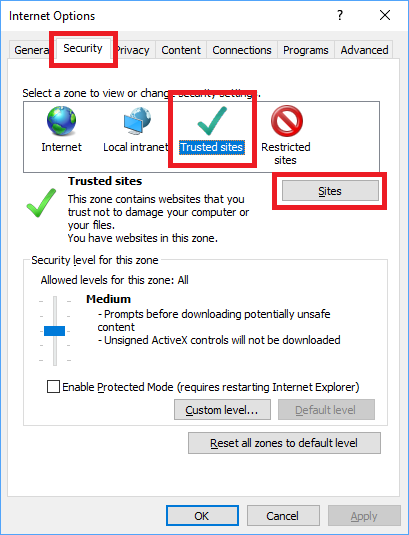
Add the WebDAV Server domain to trusted sites list:
